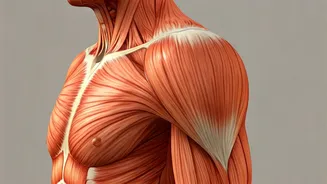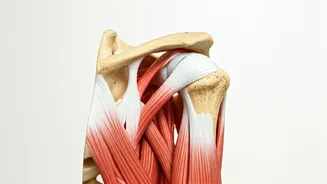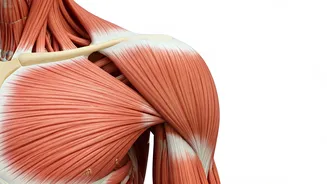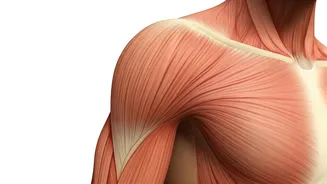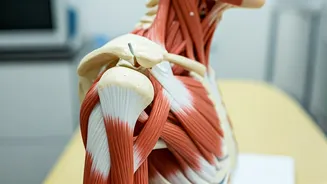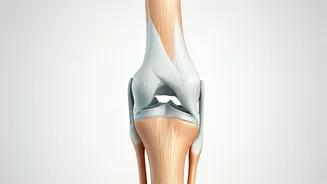Understanding Shoulder Pain
Shoulder pain can stem from various causes, including overuse, injury, or underlying conditions like arthritis. Overuse often occurs from repetitive movements,
common in sports or certain jobs. Injuries can range from strains and sprains to dislocations and fractures. Arthritis causes inflammation, pain, and stiffness in the shoulder joint. The rotator cuff, a group of muscles and tendons surrounding the shoulder, is frequently involved. These muscles provide stability and enable a wide range of motion. Shoulder pain can disrupt daily activities and diminish quality of life. The exercises discussed are designed to address common pain sources by improving flexibility, strengthening muscles, and reducing inflammation. Always consult a healthcare professional for diagnosis and treatment before starting any exercise program, especially if pain is severe or persists.
The Shoulder Blade Squeeze
This exercise targets the muscles between your shoulder blades, often contributing to shoulder pain. To perform a shoulder blade squeeze, sit or stand with your back straight and your shoulders relaxed. Gently squeeze your shoulder blades together, as if trying to hold a pencil between them. Hold this position for 5 seconds, then slowly release. Repeat this exercise 10-15 times. You should feel a gentle stretch in your upper back and a contraction in your shoulder blade muscles. Proper posture is key; avoid rounding your shoulders forward. This exercise improves posture and strengthens the muscles that support your shoulder joint, reducing strain and discomfort. Consistent practice can lead to improved shoulder blade stability and reduced pain over time. If you experience any pain during the exercise, stop and consult a healthcare professional.
Wall Slides Explained
Wall slides are beneficial for improving shoulder mobility and range of motion. Stand with your back against a wall, feet a comfortable distance from the wall. Bend your elbows to 90 degrees, keeping your forearms against the wall. Slowly slide your arms up the wall as high as you can without arching your back or losing contact with the wall. Aim to keep your elbows and forearms in contact with the wall throughout the exercise. Hold the position for a few seconds and then slowly slide your arms back down. Repeat this 10-15 times. This exercise enhances shoulder flexibility and strengthens the muscles responsible for overhead movements. It’s an excellent option for individuals with restricted shoulder mobility or those who experience stiffness. Focus on a smooth, controlled motion to prevent strain. Regular wall slides can gradually improve your shoulder’s range of motion, reducing pain and stiffness over time.
Pendulum Exercises Guide
The pendulum exercise focuses on gentle shoulder movement and is particularly helpful during the recovery phase after an injury or to ease pain. Stand with your feet shoulder-width apart and bend slightly at your waist, supporting yourself with one hand on a table or chair. Let the affected arm hang straight down, relaxed. Gently swing your arm forward and backward, side to side, and in small circles. These movements should be slow and controlled, without causing any sharp pain. Perform each movement for 1-2 minutes. The pendulum exercise aids in increasing blood flow to the shoulder and prevents stiffness. It’s a good starting point for gradually increasing shoulder mobility. As your shoulder gets stronger, you can gradually increase the size of the circles. Always listen to your body and avoid movements that cause excessive pain. If your pain worsens, consult a physical therapist.
External Rotation Exercise
This exercise strengthens the rotator cuff muscles responsible for external rotation of the shoulder. Stand with your elbows bent at 90 degrees, close to your sides, holding a light resistance band or dumbbell. Keep your wrists straight and your elbows glued to your sides, rotate your forearms outward, pulling against the resistance. Slowly return to the starting position. Repeat 10-15 times. This strengthens the external rotator muscles, crucial for shoulder stability and preventing future injuries. Use a light resistance to avoid overstressing the shoulder muscles. If using a dumbbell, begin with a low weight. This exercise is most effective when performed regularly. Consistent effort will help improve shoulder strength, stability, and reduce the chance of recurrent pain. Avoid jerky movements and maintain good posture throughout the exercise.





